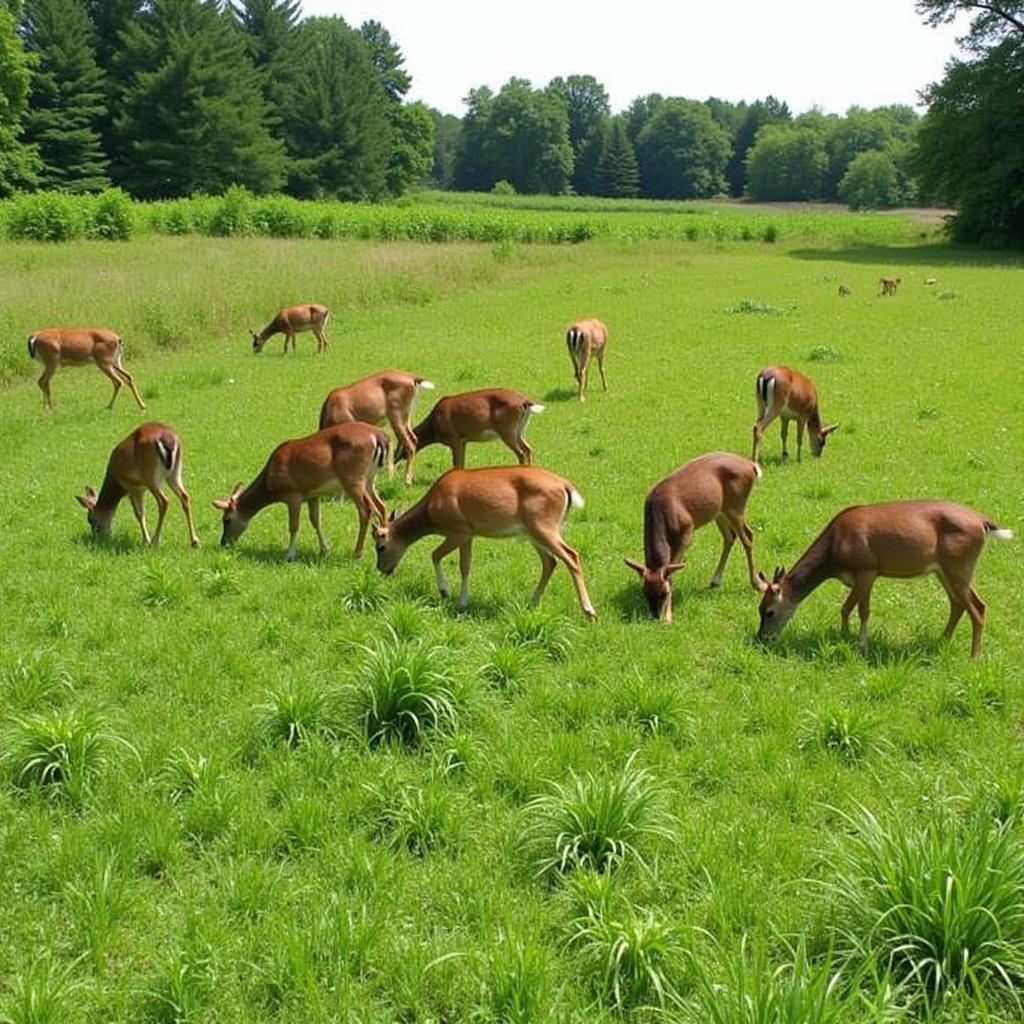No-till food plots for deer offer a low-impact, high-reward approach to attracting and sustaining healthy deer populations. This method minimizes soil disturbance, promoting healthy soil structure and maximizing nutrient retention, resulting in thriving food plots that benefit deer throughout the year. We’ll delve into the benefits, techniques, and best practices for creating and maintaining successful no-till food plots.
Why Choose No-Till Food Plots?
Traditional tilling methods can disrupt soil ecosystems, leading to erosion, compaction, and weed proliferation. No-till food plots for deer, on the other hand, preserve the natural soil structure and microbial life, crucial for long-term plot health. This approach requires less equipment and labor, making it a more sustainable and cost-effective option in the long run. Plus, the minimal ground disturbance reduces weed growth, meaning less time spent battling unwanted plants. no-till food plots for deer are a win-win for both hunters and the environment.
 Deer Foraging in a Lush No-Till Food Plot
Deer Foraging in a Lush No-Till Food Plot
Benefits Beyond the Hunt
The advantages of no-till food plots extend beyond attracting deer. Improved soil health contributes to overall ecosystem health, supporting a diverse range of plant and animal life. Reduced erosion protects water quality in nearby streams and rivers. By choosing no-till, you’re contributing to a healthier, more sustainable environment.
Establishing Your No-Till Food Plot: A Step-by-Step Guide
Creating a thriving no-till food plot requires careful planning and execution. Here’s a comprehensive guide to get you started:
- Site Selection: Choose a sunny location with well-drained soil. Consider the surrounding habitat and deer travel patterns.
- Weed Suppression: Effectively controlling existing vegetation is crucial. Herbicides, such as glyphosate, can be used to kill existing weeds before planting.
- Soil Testing: Analyze your soil to determine its pH and nutrient levels. This will guide your fertilizer and seed selection.
- Seed Selection: Choose seeds appropriate for your region and soil type. seed for food plots for deer can include clover, alfalfa, chicory, and brassicas.
- Planting: Utilize a no-till drill or broadcast spreader to distribute the seeds. Ensure proper seed-to-soil contact for optimal germination.
- Fertilization: Apply fertilizer based on your soil test results. Consider slow-release fertilizers for sustained nutrient availability.
- Maintenance: Monitor the plot regularly and address any weed or pest issues promptly.
Choosing the Right Seed
Selecting the right deer fall food plot seed is crucial for a successful no-till food plot. Consider factors like deer preferences, growing season, and nutritional value. A mix of different species can provide diverse forage throughout the year.
Maximizing Your No-Till Food Plot Success
“Understanding your local deer herd’s nutritional needs is key to a thriving food plot,” says wildlife biologist Dr. Sarah Mitchell. “Matching your seed selection to those needs ensures maximum attraction and benefit.”
Addressing Common Challenges
Dealing with weeds can be a challenge in no-till food plots. Regular monitoring and targeted herbicide application can help keep weeds under control. “Early intervention is key to effective weed management,” adds Dr. Mitchell. “Addressing weed issues promptly prevents them from becoming established.”
No-Till Food Plots: A Long-Term Investment
No-till food plots are more than just a hunting strategy; they’re a long-term investment in the health of your deer herd and the surrounding ecosystem. By embracing this sustainable practice, you’re contributing to the future of hunting and conservation. Choosing the best food plots for deer requires consideration for the specific needs of your local deer population. Remember that understanding the best time to plant, such as finding the best food plot to plant in spring, is crucial for a successful and thriving plot.
FAQ
- What are the best seeds for a no-till food plot?
- How do I control weeds in a no-till food plot?
- When is the best time to plant a no-till food plot?
- What equipment do I need for a no-till food plot?
- How often should I fertilize my no-till food plot?
- What are the benefits of no-till farming for wildlife?
- How can I improve soil health in my food plot?
Need help with your food plot? Contact us at Phone: 02437655121, Email: [email protected], or visit us at 3PGH+8R9, ĐT70A, thôn Trung, Bắc Từ Liêm, Hà Nội, Việt Nam. We offer 24/7 customer support.